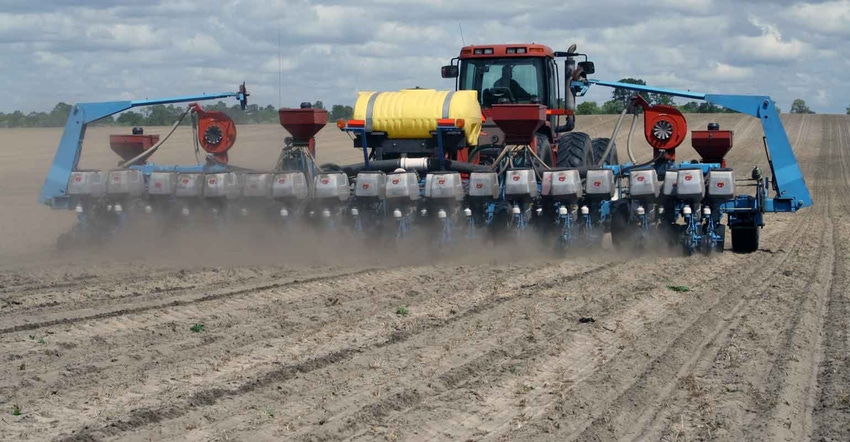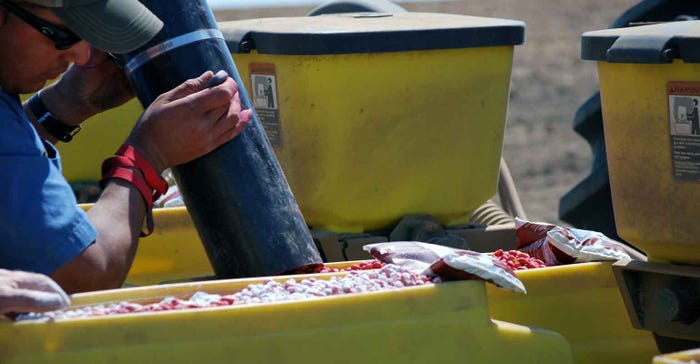
Peanut planters are being readied. Once a seed peanut goes into the furrow, it’s 140-plus-day task to get a quality high yield out of it. With input prices gaining altitude in 2022, staying above the breakeven mark will be a challenge. Providing peanuts solid momentum at planting helps.
Earlier this year at the annual Georgia Peanut Farm Show, Scott Monfort, University of Georgia Extension agronomist, provided growers things to remember to get the 2022 peanut crop off to a good-standing start.
“First off, considering we did have a good quality from last year’s (2021) crop, and from what we are hearing, I think we’re in good shape for our seed peanut quality this year,” he said. “That said, we still have to take care of the seed, whether you're a seed dealer, buying point or grower, we have to store the seed in good conditions, good air flow, and avoid highs and low temperatures.”
The industry still remembers the adverse weather during the fall harvest in 2019, which caused problems with Aspergillus flavus and Aspergillus niger. That led to seed peanut quality and germination problems going into the 2020 planting season.
Growers should find out the germination rate of the seed. Ask the buying point, he said. Georgia regulation say that germination of 75 percent or better can be sold as quality seed. Still, some lots may rate 80 percent or even 90 percent. Growers will want to consider the germination to adjust seeding rates at planting as needed.
Once delivered, growers who take care of the seed and maintain its good storage will better preserve germination rates, he said. If seed goes into a wagon parked under a shed or some other place where temperature and humidity fluctuate, the germination rate is going to decline faster than what it would be in a more protected environment.
If a grower gets many lots of seed, “you need to make sure those first lots received go in the planter first. It's imperative to make sure that our germ rates stay strong throughout planting,” he said.
Varieties
GA-06G continues to the be the workhorse for Southeast runner peanuts, he said, accounting for 80% or better of total planted acres. “But the newer varieties are gaining some ground, and we’re glad to have them. We will see a move away from 06 at some point, but we're not there yet.”
Newer varieties gaining acres include:
GA12-Y, but it’s a “management variety. You can’t just put it out in every situation and expect it to yield like you want,” he said. After May 10, it’s best to not plant 12-Y. In irrigated fields, a plant growth regulator is needed to manage vines. It’s excellent against white mold and tomato spotted will virus but needs protection against Rhizotonia limb rot.
GA 16-HO, a good-yielding high-oleic, he said, but it is prone to early leafspot problems late in the season.
GA-18RU, a high-yielding runner, but not one to plant in April due to higher susceptibility to TSWV. If planted earlier than May 10, Thimet is recommended.
“But that said, if you plant any of these varieties early, or before the start of that May 10 window, you need to consider putting out Thimet. It is the only insecticide that adds protection against spotted wilt,” he said.
GA-20VHO, a very new variety with not many acres, “and we’re not sure where this one might fit in because it has issues with excessive water. It has a different growth habit and we like it, but too much water can hurt yields. If we can manage water without too much, it yields very well,” he said.
TIFNV-High Oleic, which as had some very good yields, he said, with high level of resistance to TSWV and peanut root-knot nematode.
AUNPL 17 showed solid yields in 2021, he said, with high-oleic and TSWV-resistance.

“Our growers know how to make high-quality good peanuts. But this year especially, every decision, even the smallest, has potential to make good money or lose good money."
In-furrow
“Seeding rate at six to seven per foot on singles and six to eight over twins. We’ve got some people still planting single with eight to nine seed per foot and I believe that’s a waste of seed because it's causing us more rot problems and not getting that much stand back from it. And remember, every time you increase one seed per foot on acre basis, you're costing yourself about $18,” he said.
Also, he said, inoculants are relatively cheap insurance policies to use. There are quite a few inoculants available. Remember to take care of the inoculants by keeping them out of direct sunlight or places that reach extreme temperatures.
Over the last two years, Extension specialists in major peanut producing areas have advised growers to not use in-furrow fertilizers.
“Some of the fertilizers recommend one, two or even three gallons per acre. What we are finding is anything more than a gallon can significantly reduce our stands, by as much as 40% or 50%. It is affecting our germination,” he said.
One gallon or less per acre of in-furrow fertilizer, he said, isn’t affecting stand loss, but research shows it can delay emergence by as much as three days. “If we paying to put something in-furrow you want to get something out of it, not lose something,” he said.
Spring weather has been a bit erratic so far with temperatures and moisture extremes. Watch the soil temps. Best to be 68 degrees or better for at least three days straight and try not to chase moisture, he said.
“Our growers know how to make high-quality good peanuts. But this year especially, every decision, even the smallest, has potential to make good money or lose good money,” he said.
About the Author(s)
You May Also Like






